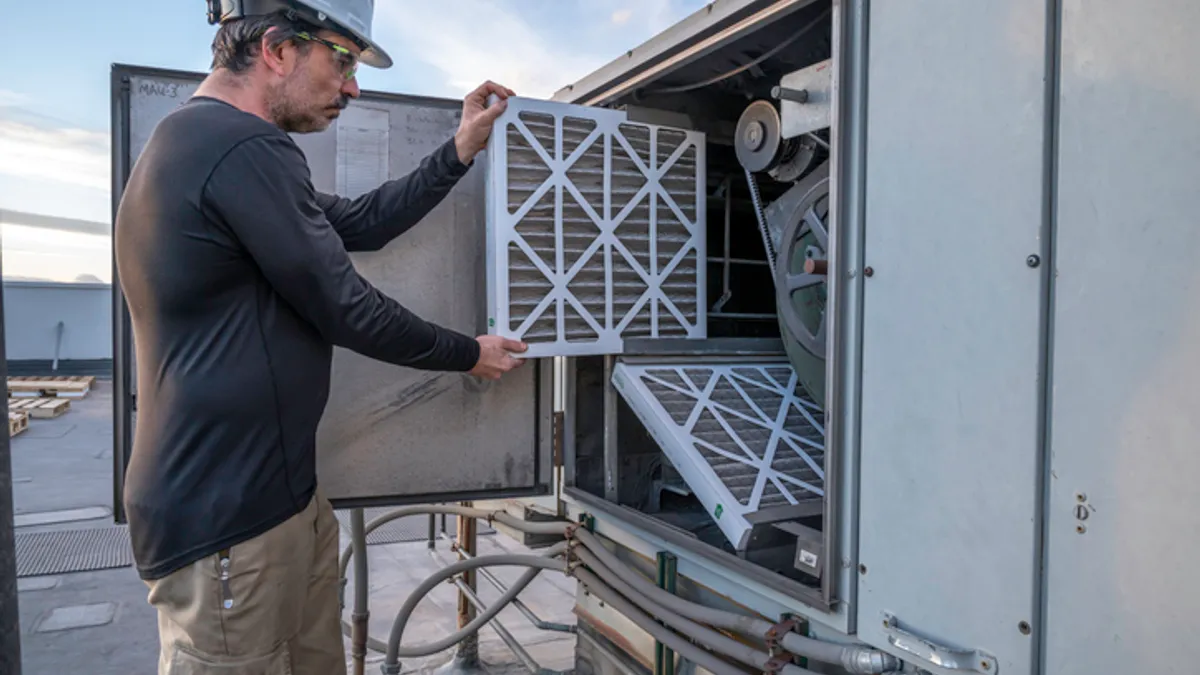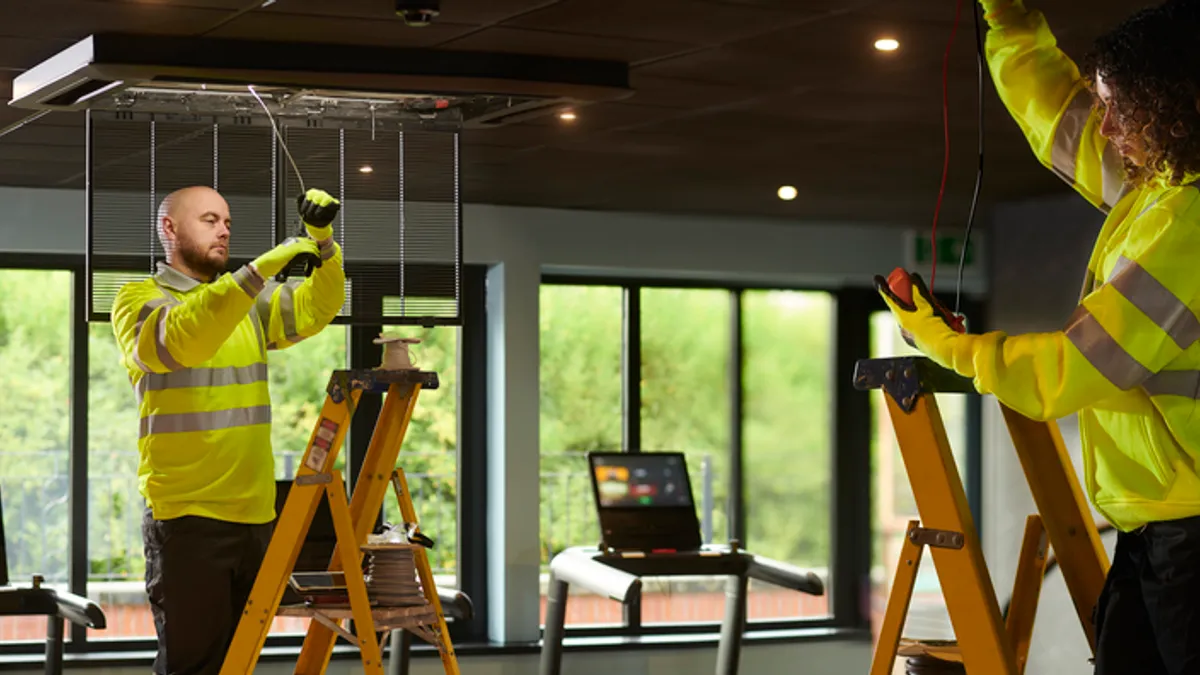Resist the temptation to close off outdoor ventilation and replace it with stepped-up filtration as a way to improve efficiency, Joseph Allen, director of Harvard’s healthy buildings program, said in a U.S. Environmental Protect Agency webcast on school indoor air quality.
Outdoor ventilation is integral to people’s health and even with the highest filtration, relying on indoor air is a risky tradeoff, he said.
“It assumes we know exactly what to clean and that we can effectively clean it,” he said.
Building occupants performed measurably better across several mental tasks if they’re exposed to well-ventilated spaces, according to study findings shared by Allen. “The results are really quite dramatic,” he said. “When we provide a better indoor environment — better ventilation, lower chemical load — we see people perform better on these tests of higher order cognitive function.”
From a physical health perspective, just opening a window can stop the spread of influenza and other infectious respiratory aerosols from becoming super spreader events, he said.
“You still have localized pockets” of infectious aerosols after you open a window, he said, but you don't get “events where one person may infect 70% [to] 90% of the people in the room.”
The COVID-19 pandemic helped remind public officials of the importance of ventilation in stopping the spread of infectious respiratory aerosols, he said. One positive result of the outbreak was a change initiated by ASHRAE and the CDC to recommend raising the minimum ventilation standard from 15 cubic feet per minute to 30 cfm. The recommendations also raised the suggested air changes to five to six per hour, up from three to four per hour, Allen said.
Scientists have known for almost 100 years that the 30 cfm minimum ventilation standard and five to six air changes an hour are best from a health standard, he said. But ASHRAE in the 1970s moved away from a health-based standard to a comfort-based standard that was designed to reduce odors.
“The [odor-based] standard for acceptable indoor air quality is objectively not acceptable,” he said. “It’s not a health-based standard, but ultimately, that’s guided a lot of the decisions around ventilation in schools and offices and everywhere else we spend our time.”
Ventilation and filtration specialists have tended to look at efficiency and indoor air quality as separate goals that work against one another but there’s no reason the two goals can’t be pursued together, he said.
“We’ve been answering the same question over and over,” he said. “What’s the balance between health and energy efficiency? How about no balance? How about we do both because we can, and we know how to do it.”
For facilities managers, improving filtration and ventilation in older buildings can be a challenge. But even if they’re working with outdated equipment, there are steps they can take.
One simple step is to use higher-rated filters, like MERV-13, as long as they make sure the upgrade doesn’t stress the motor in the old system.
“You want to work with a professional to evaluate the [highest] level MERV filter your HVAC system can accommodate,” Jordan Zambrana, an EPA biologist, said in the webcast.
If a test shows the higher filter is a problem, supplement the HVAC system with in-room air cleaners, he said.
“If you find you can’t accommodate a MERV-13, or at least a MERV-11, but you still want to improve filtration within your buildings or classrooms, your next step is to look at individual air cleaners in the room, generally,” he said.














